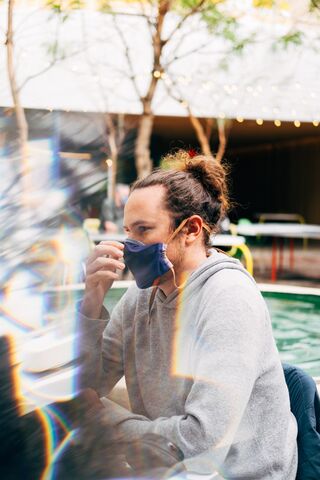Psychiatry
My Experience Delivering Psychiatric Care During COVID-19
Unique challenges and responses.
Posted December 5, 2021 Reviewed by Jessica Schrader
Key points
- Masking and PPE can make it more difficult to read our patients' nonverbal responses accurately.
- Video sessions, or masking during in-person sessions, can make connecting with patients extremely challenging.
- We can work around the physical barriers to communicate more consciously; these skills will improve care for all patients.

Fear.
That was the pervasive feeling in March 2020, when COVID-19 cases were increasing and havoc ensued. In my work as a psychiatrist at Bellevue Hospital, on the faculty of NYU Langone, as well as at a VA hospital in New York City, the first change was the use of masks by staff. Previously, only very special circumstances (such as treating a patient with tuberculosis) warranted mask-wearing. Now there would be ongoing, increased protocols for all stages of treatment, from the time a patient was admitted from the emergency room until their discharge.
As doctors, we had much to learn. The sense of fear wasn’t limited only to the patients under our care. Surrounded by very sick or dying patients, and stunned by the high rates of infection of the overworked medical staff, we, too, were scared but tried to focus on caring for our patients to the best of our abilities.
Psychiatric patients have unique COVID-related issues

Following social distancing protocols made connecting with our patients extremely challenging. Wearing our PPE made it much more difficult to establish rapport. With our facial expressions, mannerisms, and characteristics blocked by masks, gloves, face shields, and gowns, patients were unable to absorb non-verbal cues from eye contact, facial expression, and tone of voice. This proved difficult when performing a mental status examination (MSE), a routine assessment of psychiatric symptoms. Not only was it difficult for our patients to relate to us, but the PPE also made it difficult for us to read our patients' nonverbal responses accurately, especially due to heightened anxiety and fear caused by safety protocols within this vulnerable population.
When a patient who sought inpatient psychiatric treatment found out they had COVID, their fear, depression, helplessness, and anxiety often skyrocketed. Frequently COVID and the resulting inflammation and other immune responses exacerbated mental health symptoms, such as symptoms of ADHD, underlying anxiety disorders, and even suicidal thoughts. Especially in the early days of COVID, when we were dealing with so many unknowns, it was difficult to provide substantive medical advice, which did little for patient morale.
Addressing the challenges
It was clear that in light of new safety protocols, I needed to find new ways of engaging my patients and treating them. I started every session by introducing myself and acknowledging that seeing me in the PPE suit could be upsetting. With physical barriers in place, I was forced to communicate more consciously with somewhat exaggerated body language, gestures, and tone of voice. Calmly providing patients with desperately sought information and reassurance was key. Outpatient care was given via video sessions.
Although this meant a less personal, face-to-face approach to treatment, a surprise benefit was that video conferencing made it more convenient for patients to attend sessions and there were far fewer missed visits. Another surprising and positive outcome: because many patients (understandably so) have an increased fear of hospitals since COVID struck, patients generally have been more proactive about addressing their mental health concerns before they require hospitalization. With more regular maintenance care than might have been sought pre-COVID, many patients are actually doing better. (I have also seen an uptick in my private practice as well, with some patients who are concerned about substance abuse, anxiety, depression, and other challenges more often being proactive, seeking help before getting to a crisis.)
© 2021 Dr. Jim Dhyrmes. All rights reserved.


